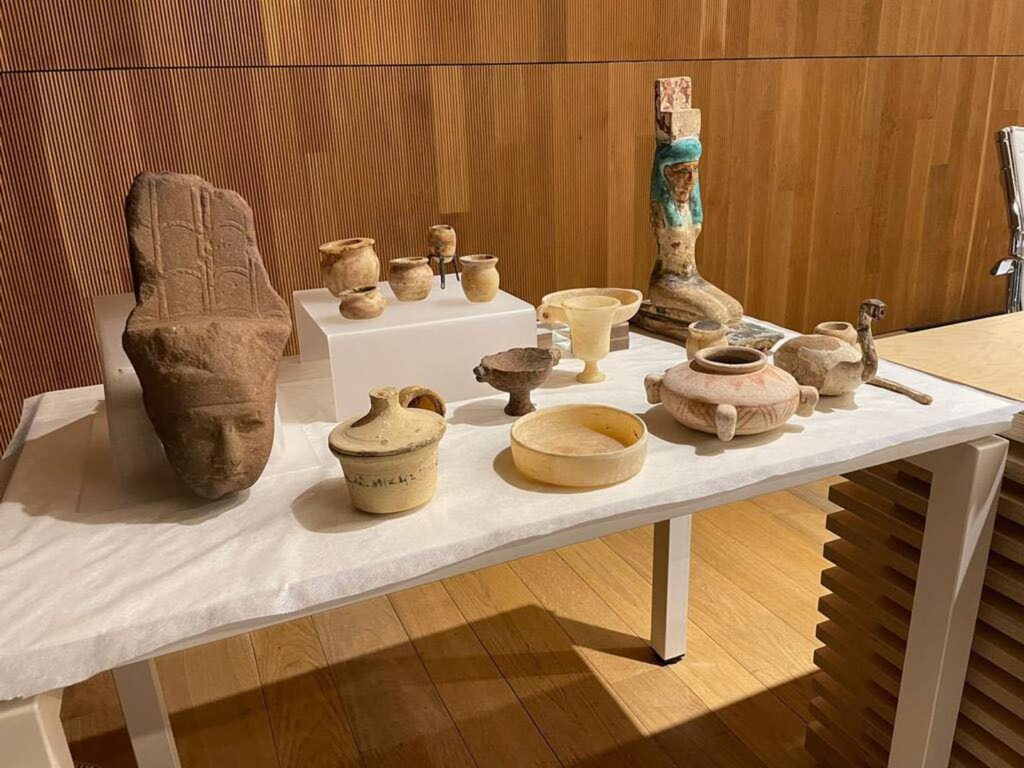Egypt retrieves 36 smuggled artifacts from Spain
Pharaonic artefacts that were smuggled out of Egypt in 2014 were returned to the country on Monday. The 36 pieces were seized on arrival at Valencia, Spain, that year.
“This handover came as a result of effective judicial co-operation, and the result of concerted efforts between the Public Prosecution, the Egyptian Ministry of Foreign Affairs and the Embassy of the Arab Republic of Egypt in Spain,” read a prosecution statement posted on Facebook on Monday.
The repatriated items include busts made from limestone, marble and granite; bowls, vases, figurines and an ornate wooden box.

Prosecutors celebrated the return of the smuggled artefacts as a win for Egyptian-Spanish bilateral relations.
In their statement, they thanked Spain’s security officials for their commitment to preserving Egypt’s cultural heritage.
The artefacts were received by an Egyptian delegation including the country’s ambassador at a ceremony held at the National Archaeological Museum in Madrid on Monday.
They had been taken there to be assessed before the Egyptian delegation was contacted to come and retrieve them.

Investigations into the smuggling of these artefacts began in June 2014, the public prosecutor’s statement read.
It said that security officials had proved at the time that the smuggled items left the coastal Egyptian city of Alexandria before they were seized by Spanish officials at the port of Valencia in the same year.
Egypt repatriates 114 smuggled artefacts from France
The items had been hidden onboard a container ship and forged documents were submitted to Spanish authorities to facilitate the smuggling.
Since 2014, Egyptian prosecutors have been following up on the case with Spanish authorities, the statement, released on Monday, said.
This year, Spain’s judiciary ruled that the items should be returned to Egypt. Word was sent to Egyptian officials, who formed a delegation to retrieve them.

Egyptian artefacts have long been smuggled overseas.
The practice increased markedly in the period that followed a popular uprising in 2011 that caused a wave of political instability and lapses in security. The country’s tourism ministry announced this year that in the past decade, Egyptian authorities had repatriated 30,000 artefacts.
They had reached France, Denmark, Belgium and the US, among many countries.
Several prominent Egyptologists have launched awareness campaigns to help Egypt to retrieve smuggled artefacts, many of which are sold at discreet auctions at some of the world’s foremost auction houses.
A haul of more than 5,000 artefacts housed at the Museum of the Bible, in Washington, DC, was returned to Egypt in January.





